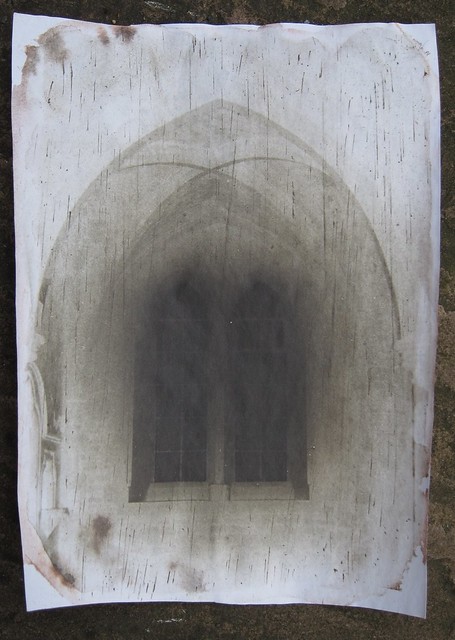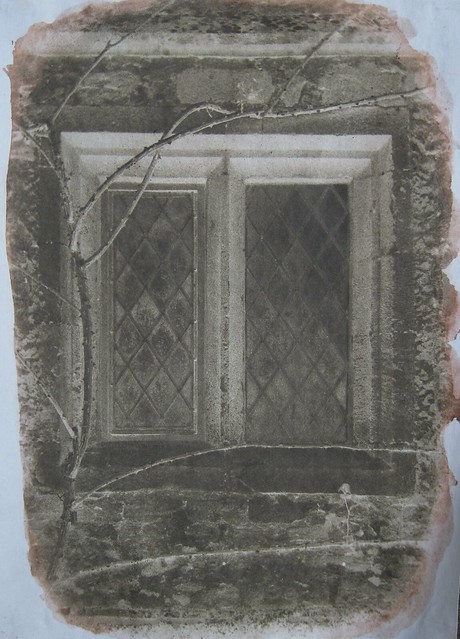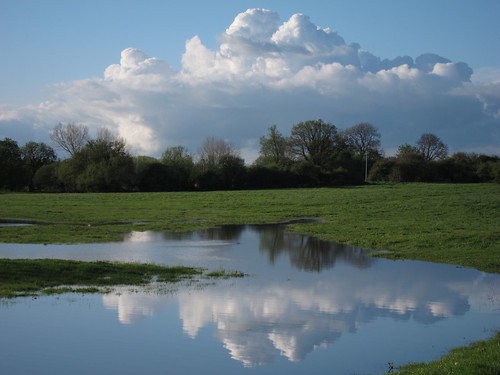sunday
There are certain natural systems that can make one really believe in the Divine Plan – opposable thumbs, sex, a damn good apple – but one that keeps coming up here for some reason is the theory that poisonous plants grow quite near their cure, like Stinging Nettle and Dock Leaf, or Poison Ivy and Jewelweed. And so, I thought, it is with England and Elderflower. They have Elderflower cordials and flavors in every shop here, it seems, and it was either champagne or Elderflower at the museum reception on Friday. I remember reading recently that a thorough study of natural cold remedies revealed that most things, like zinc and vitamin C, did little if anything to help, and that only two remedies showed any promise – gargling with salt water, and Elderflower. Both are rather in abundance in gray rainy England, and it must be to cure bloody colds like this one…
Yes, it’s another gray rainy morning, and I’ve shivered through the cold empty rooms of the old apartment and into the kitchen to make my English Elixir – hot water, lemon and Elderflower – and get to class. A good strong coffee would help, but I’m way out of my coffee habit here. It’s usually one cup in the morning to get me going, and maybe, but not always, others in the afternoon as a purely social experience. There is good coffee here, especially at the bakery on Church Street (one of the four lovely streets in the village) but they never seem to be open when I need them to be, especially on a Sunday.
At the darkroom, we have several trays filled with collected rainwater, and the tent has withstood the night’s storm. Neither Addison nor Rachel has slept much through the howling winds, apparently, and everyone is moving a little slowly. If this keeps up it will be hard on our spirits as well as our work. Nevertheless, we have big plans today to shoot at the Abbey itself, and there’s nothing to do but keep at it.
We are prepping paper every day, so that we can always shoot when we want to. It’s a long and boring process, and easily my least favorite part of Calotypy. There’s no reason to complain – it’s simple enough – but I have some Pavlovian response to the safelight on and the Iodide out. The problem is that I usually do it at the end of the day, when I’m already quite tired. The chemistry is easy enough – brushing on the silver, waiting an interminable few minutes while it dries, then bathing it in iodide for three minutes. I do get crabby at even this simple procedure, but the problem comes from the wash. It needs to be in running water for two hours, and you can’t ignore it. Every ten minutes or so, I make sure to shuffle and flip the papers, and watch for a telltale purple stain of iodide (from starch in the paper, perhaps?) that tells me everything is working ok. But at the end of the day, as I usually do it, I am often already tired, and two extra hours of half-vigilance is deadly to a tired mind… Now, even when we idodize in the morning, I become tired and cranky. Especially on a gray day.
The rain is still intermittent when we finally shoot, but not terrible. (I am glad I got some new wellies for this trip, as they are now my Everyday Shoes.) It’s gorgeous at the Abbey though, especially in the cloisters, where Malin and Addison are working. Matt and Richard are in the courtyard shooting the pear tree against the wall. The light is still quite soft but his exposure is only 20 seconds or so, which is great. Malin’s will be more like 5 or 10 minutes, but still, not bad for indoors. I’m trying a twenty-minute exposure of the Sacristy Window. We’re all getting odd stares and polite questions from the tourists coming through, but I bet it’s less from the big cameras than it is from our matching blue rubber gloves.
Things go pretty well today, and I’m mostly just trying to fine-tune the students’ brushing technique. There are a few missed spots in iodizing and/or sensitizing, and I think they’re just not used to overlapping the brushstrokes as much as they need to, but they’re learning. More disturbing, however, is an increase in the amount of what I call “comets” – little streaks of developing silver not unlike what happens with wet collodion. There are a few reasons these could happen, but I must confess I don’t know exactly what causes them every time. The artifacts of a process are sometimes my favorite part, but not if they take over the image or go wildly uncontrolled, and that’s what’s been happening to us.
I do know from past experience that brushing chemistry back-and-forth past the edge of the paper can easily drag in foreign matter or damage the cotton ball in such a way as to leave a spot. The comet seems to be a high spot of dust that collects developer which then drags across in the direction of the brush, sometimes in all four directions (creating a “star”.) Since our developer includes both physically-developing silver and chemically-developing Gallic Acid, it’s just trouble. It is partly to avoid this problem (and partly an aesthetic choice) that I like to brush well within the edges of the paper, giving a distinctive rough edge (which can be trimmed if you don’t like it. I do.) However that’s not the only obvious problem. Often, to get the paper to sit flat in a camera, one would sandwich the wet paper between sheets of clean glass, but I use stiff archival mylar sleeves. Glass is much easier to clean, of course, and the mylar could build up static that draws in the dust… Hmmm.

lots of comets in the Sacristy
By late afternoon I have Matt and Malin being much more careful, cleaning the mylar and trying to stay within the edges, but we’re still getting some comets here and there. In fact, on a couple of shots, I’m getting them worst of all! Malin can’t seem to help herself and is always crossing the paper, and indeed she does end up with more comets, so that still seems to be true, but whatever else is causing them is still a little baffling. At the end of the day, we do manage a few good shots, and sometimes, even the comets look good. Tomorrow, we will go through every step once more, very methodically, and see how we do.
Tonight after class it’s back to the Bell, with just Richard, Rachel and I. The owners, Alan and Heather, really are the loveliest people, and tonight it’s a proper Sunday Roast Dinner, so coming to this pub really feels like home. The river Avon has quite flooded, as it often does, so the walk back to the Abbey is strange and beautiful in the late evening light. There’s even some peeking sun – the first I’ve seen in ages – and everything looks green, washed and gorgeous. I’m restless and inspired now, warmed by Scotch and sunlight, and Richard urges me to take advantage of it. I still need rest, though, and head back to my room.
Standing at my window, I see the most beautiful light hitting the overgrown walls of the old stables below and I just can’t stay in. Wellies back on, I fairly run over to the darkroom to sensitize a sheet and hurry back with my camera. The sun’s almost down, and I may have missed my light, but as the 30-second exposure begins, it peeks back at me once more. Also, I think I may have figured out what’s been giving us so many devilish comets…

This is the best I’ve felt in a long time. I’m listening to Smog, the old standby, on my iPod and walking through Lacock Abbey completely alone. I am teased by golden sunlight, inspired by work, challenged by the chemistry, and it is good.









